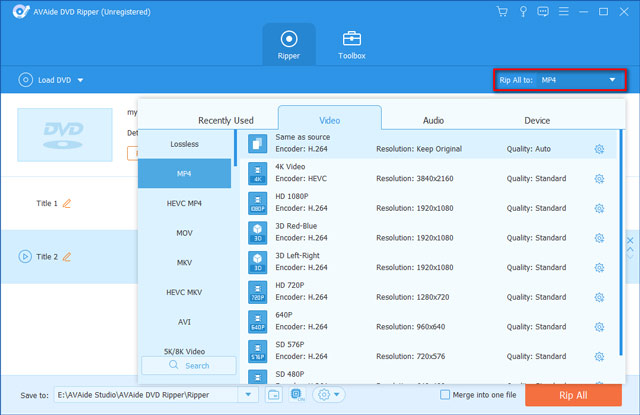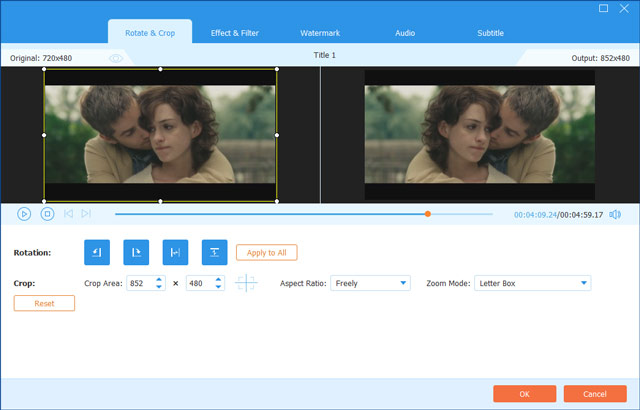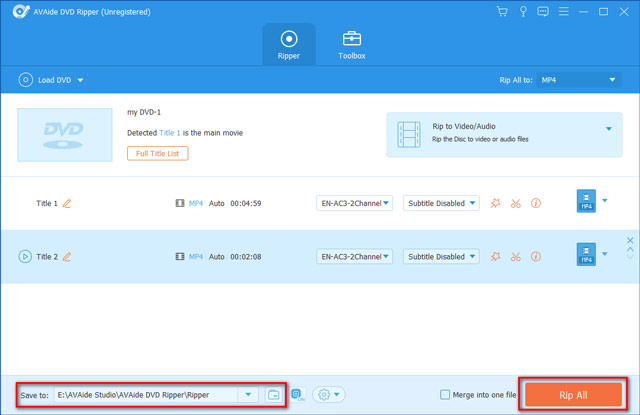DVDs have long been a popular medium for storing and distributing video content. However, as technology evolves, more and more users are looking to convert their DVD collections into digital formats for convenience and accessibility. This article will explore the average size of ripped DVDs and guide how to rip DVDs with high quality and small file sizes.
Part 1. DVD Rip File Size
The average size of a ripped DVD can vary based on several factors, such as the duration of the video, the quality settings used during the ripping process, and the compression techniques employed. On average, a conventional DVD typically stores around 4.7 GB of data and can result in a ripped file size ranging from 700 MB to 1.5 GB.
Part 2. Check Several Factors That Decide the Ripped DVD File Size
Understanding the factors influencing DVD rip file sizes is essential for efficient storage, easy accessibility, and smooth playback of your digitized video content. Check several main factors below to balance the video quality and file size.
When ripping a DVD, you have choices regarding the video format. The most commonly used formats are MPEG-2, MPEG-4, and H.264. Each format has its own compression algorithms and varying degrees of video quality, directly impacting the resulting file size.
Video bitrate determines the amount of data used to encode each second of video. Higher bitrates result in better image quality but larger file sizes. Conversely, lower bitrates reduce file sizes but may compromise the video's visual quality. Selecting an appropriate bitrate is crucial in finding the right balance between quality and size.
DVD rips typically contain multiple audio tracks, offering different language options. The audio codec used, such as AC3 or AAC, and the bitrate chosen directly affect the audio file size associated with the ripped DVD.
A ripped DVD's resolution and aspect ratio significantly impact the resulting file size. Higher resolutions like 1080p or 4K provide sharper and more detailed images but occupy more storage space. Opting for lower resolutions or aspect ratios can reduce file sizes, particularly if the content is intended for smaller screens or devices with limited storage capacity.
The length of the ripped DVD also affects file size. Longer videos naturally require more storage space. Additionally, the compression applied during the ripping process impacts the final file size. Higher compression ratios reduce file size but may result in losing video quality. Identifying the appropriate compression level is important to balance size and quality.
Part 3. How to Rip DVDs with High Quality and Small Sizes
Several factors should be considered to achieve high-quality DVD rips with small file sizes. Let's explore the key steps involved in the DVD-ripping process.
Choose the Right DVD Ripper Software
Selecting reliable DVD-ripping software is crucial for achieving optimal results. There are numerous free and paid options with different features and capabilities. Popular choices include AVAide DVD Ripper, HandBrake, and MakeMKV.

TRY IT FREE For Windows 7 or later
 Secure Download
Secure Download
TRY IT FREE For Mac OS X 10.13 or later
 Secure Download
Secure DownloadAdjust Video and Audio Settings
Most DVD-ripping software allows users to customize various video and audio settings. To balance quality and file size, consider adjusting the output video resolution, video codec, audio codec, and bitrate. The recommended DVD Ripper lets you easily select your preferred video format and customize these settings.

Trim Unnecessary Parts
In some cases, DVDs may contain unwanted content, such as advertisements or extra features. Consider removing these portions during the ripping process to reduce the file size further. The DVD Ripper allows you to only select the necessary DVD chapter or title for ripping. Moreover, it offers other options to optimize the output effects of your ripped DVD.

As the optimal balance between ripped DVD file size and quality can vary based on personal preferences, you can conduct trials with different settings to find the ideal combination for your needs.

When determining the file size of a DVD rip, it is crucial to consider the capabilities of your storage devices and playback equipment. Ensure your storage media, such as external hard drives or cloud storage, can accommodate the resulting file sizes. Similarly, verify that your preferred media player or streaming device supports the video and audio codecs used in your DVD rip to ensure smooth playback.
Part 4. FAQs of DVD Rip File Size
Question 1. How do you rip a DVD without losing quality?
To rip a DVD without losing quality, you can use DVD ripping software that supports lossless ripping. One popular option is AVAide DVD Ripper. It allows you to extract the contents of a DVD and preserve the original video and audio quality.
Question 2. What is the best bitrate for DVD ripping?
The best bitrate for DVD ripping depends on several factors, including the desired video quality and file size. Generally, a bitrate between 1500 and 2500 kbps is recommended to balance quality and file size. However, if you prioritize higher quality, you can go for a higher bitrate. Conversely, you can go for a lower bitrate if you want to reduce file size.
Question 3. Can I rip my DVDs using VLC?
Yes, you can rip DVDs using the VLC media player. VLC has a built-in feature that can convert your DVDs into digital files. You can access its Convert/Save function from the Media menu. Load your DVD and select the desired conversion settings, such as the destination file location, video codec, audio codec, and more. Please note that VLC doesn’t support copyrighted DVDs, and its DVD ripping may be subject to legal restrictions in some countries.
Ripping DVDs to achieve high-quality results with small file sizes requires carefully considering software, video, and audio settings. This post discusses the average file sizes of ripped DVDs and gives a detailed guide to ripping your DVDs with high quality.
Best tool for ripping and converting DVD Disc/Folder/ISO image file into over various formats.




